
iPhone Moon, D7000 ISS
Posted: 6 November 2011
Early Saturday morning, 5 November, we had our first snow of the season, and before it turned to snow, we had nearly an inch of rain. It wasn't supposed to snow, nor even rain much here. So much for the forecasts.
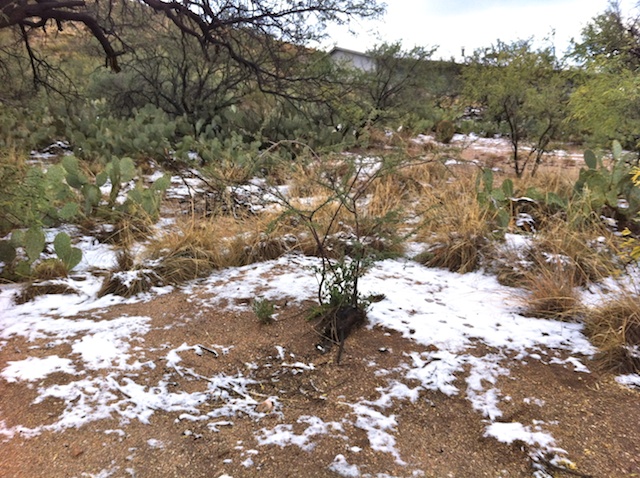
But by sunset, the sky was mostly clear, which was good as I wanted to try another International Space Station (ISS) video recording attempt. The observatory was opened at 1726 MST, 61°F. There were some clouds low along the horizon west to north. 1733 MST: viewed Mercury, and then Venus, 77X, low through some tree branches. The disks of both planets were visible. I then updated the ISS TLE in the AutoStar. 1741 MST: viewed the moon at 77X. Seeing was not very good. Switched to the visual back for iPhone lunar imaging. This is an afocal 77X Camera app photo using the MX-1 adapter on the 8" LX200-ACF:
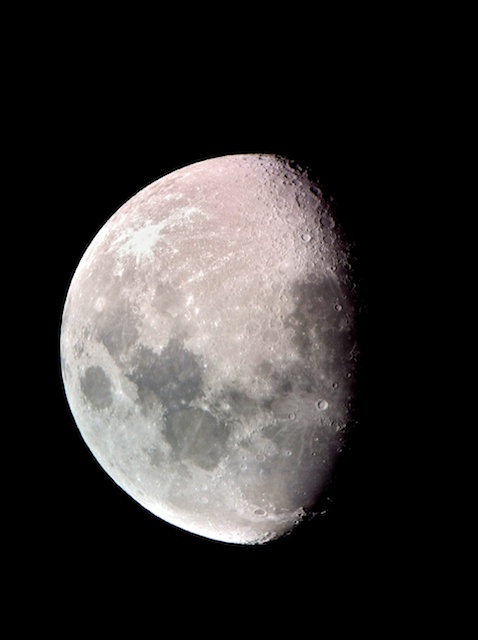
This is an afocal 231X photo, cropped and sharpened using the (currently free) "Perfect Photo" iOS app:
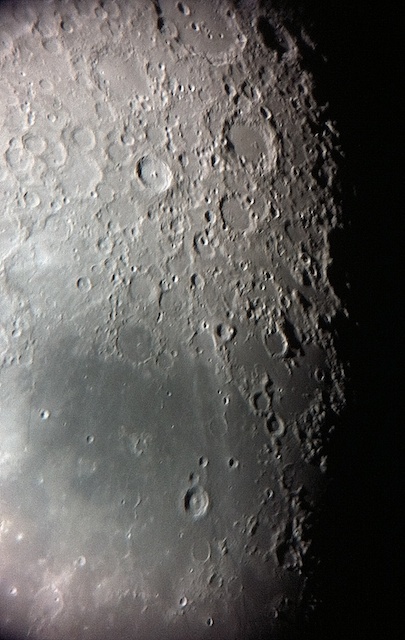
1809 MST: I switched back to the diagonal and did some lunar observing at 77X, 133X, 206X, and 364X. Seeing was not good enough to view at 364X, but at 206X the views along the terminator were nice. 1814 MST: viewed Jupiter, 77X, low in the east. Seeing was lousy. Three moons were visible. The fourth, Io, was transiting the disk but neither it nor its shadow were visible due to the poor seeing.
1820 MST: began preparations for video recording the ISS pass with the D7000 DSLR. First, I checked the finderscope alignment to ensure it was accurately aligned to the 8" telescope. Then I did some focus and exposure test video recordings using the moon. This was to prepare for a possible ISS-Moon transit Monday evening, 7 November. (Right now the weather forecast is not good for Monday.) I made several recordings at different shutter speeds and ISO settings. I determined that 1/3200sec, ISO 5000, should work to record the ISS as it quickly crosses the moon's disk. I then began waiting for this night's ISS pass to begin.
The pass turned out to be a good one, with fairly accurate tracking. I did not use the 3X TeleXtender this pass, so the D7000 DSLR video recording was done at prime focus only. The exposure for the recording was 1/1000sec, ISO 2000. The recording was 5m47s long. The poor seeing, minimal magnification, combined with the rapid movement of the ISS across the camera FOV, were not conducive to acquiring clear images of the ISS. One video frame showed the solar panels fairly clearly. This is that frame, which gives you an idea of the minimal magnification when imaging the ISS at just prime focus:
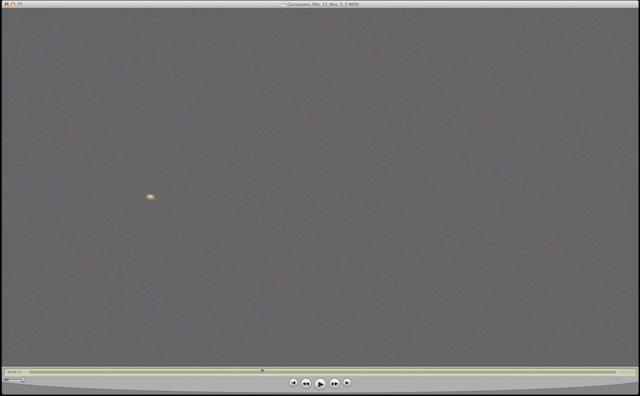
This the same frame, cropped, magnified, and edited to better show the ISS. The solar panels are gold and visible on either side of the station core.
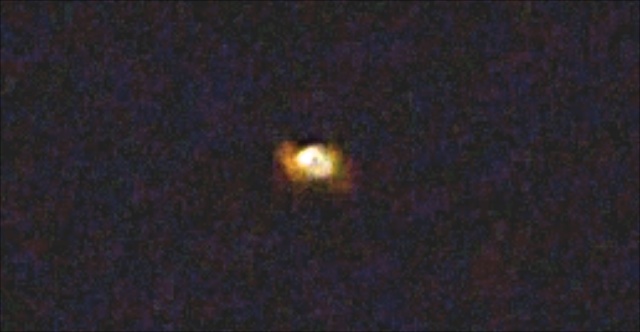
I'll keep working at imaging the ISS with the 8" telescope.
1905 MST: took a quick look at the moon again, 77X. Seeing was still lousy.
Closed the observatory at 1920 MST, 44°F.
Go to the previous report.
Return to the Cassiopeia Observatory Welcome Page.